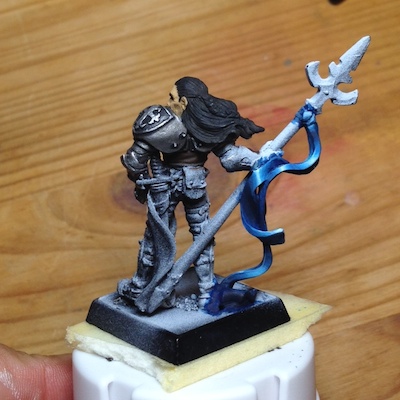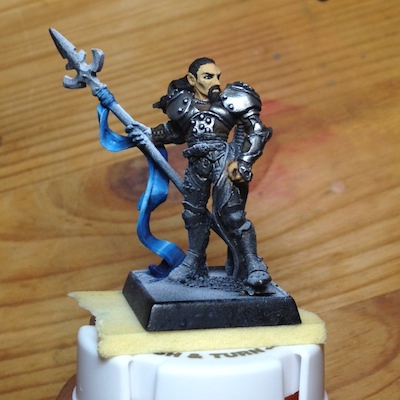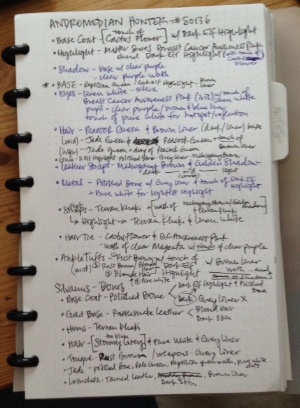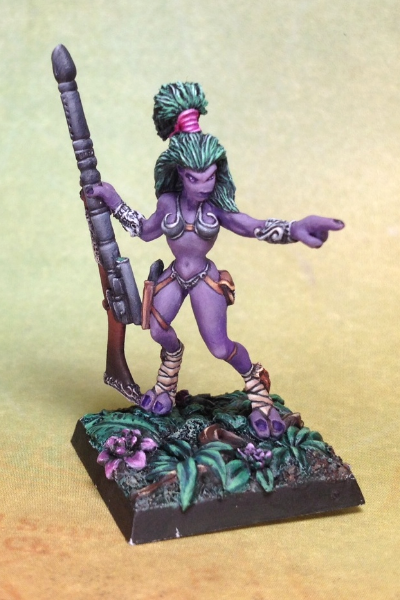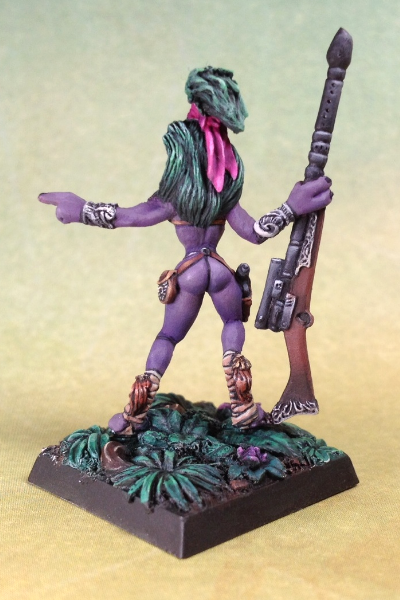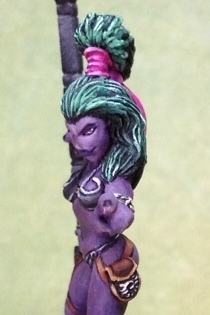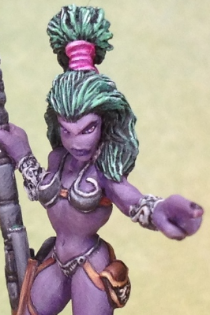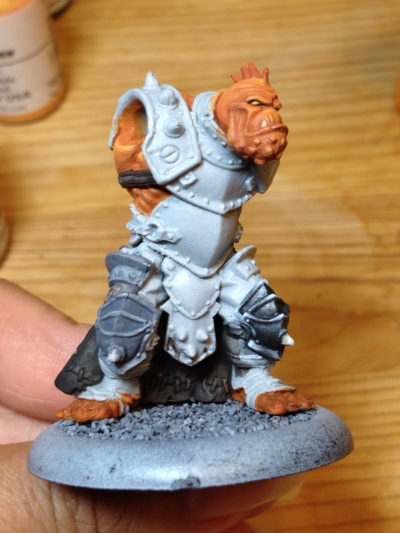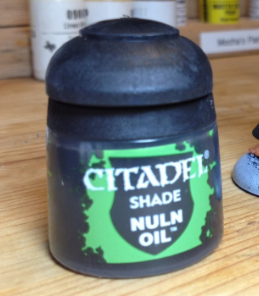Morning! A bit of a shorter blog post today since I'm feeling like the White Rabbit from "Alice in Wonderland".
Lately I've been thinking about the ever-prevalent idea of "more contrast!". While it can apply to almost anything, I'm currently testing that concept with painting fabric, where I'm attempting to mimic a silky fabric by pushing the highlights up to Linen White. I'm just about done with the back and a little over halfway through the front. I'm really liking the effect so far. Another happy accident!
The most important thing I'm learning? Mixing your paint super-thin to get those blends right or making sure to get the exact right shade to make those transitions quickly and smoothly:
I know this practice will come in handy, since painting NMM (Non Metallic Metal) seems similar to this concept. I notice that metals transition very quickly from light to dark with both smooth and hard lines in between. I'd happy paint faces, eyes & skin all day, but metal-- I find it frustrating. Just when I think I'm onto something, I step back and think "No, that doesn't look right at all!". My NMM in the past has often ended up looking like leather, with smooth, matte transitions looking like it was in soft, diffused light. No good. But no worries, it just meant more research and more practice! I think this contrast fabric idea is my missing link. Once I feel comfortable with this, I think I'll apply it to metal and see if I can get more accurate results!

